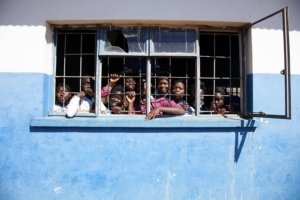Poverty Reduction in Botswana
 Poverty reduction in Botswana has seen success in recent years. In the early 21st century, 29.1% of its citizens lived on below $2.15 a day, but later surveys showed that the number had declined to 15.4% between 2015 and 2016. Since the country’s independence in 1966, it has had the desire to create a poverty-free and inequality-free nation.
Poverty reduction in Botswana has seen success in recent years. In the early 21st century, 29.1% of its citizens lived on below $2.15 a day, but later surveys showed that the number had declined to 15.4% between 2015 and 2016. Since the country’s independence in 1966, it has had the desire to create a poverty-free and inequality-free nation.
The Role of Education
A focus on education, particularly at the primary level, has greatly benefited the nation and played an important role in reducing poverty levels among the population. The completion rate for primary education stands at 94.55% as of April 24, 2023, while the adult literacy rate of 86.82% ranks significantly higher than other sub-Saharan African nations.
Future Plans
Botswana attributes much of its recent success to its well-thought-out plans for the future, epitomized by Vision 2016 and its successor, Vision 2036. The aim is to transform Botswana into a high-income nation by 2036. This agenda includes four pillars:
- Sustainable economic development
- Human and social development
- Sustainable environment
- Governance, peace and security
Botswana plans to become a self-sustaining, export-led, and knowledge-based economy. The country learned valuable lessons from its previous national plan, Vision 2016. It established the National Poverty Eradication Programme (NPEP), which takes a multidimensional approach to poverty by considering various factors that contribute to communities’ financial and social situation, instead of relying on income as the sole indicator of poverty. The NPEP aims to promote small-scale entrepreneurship, employment initiatives and skills development, giving individuals greater financial and social agency.
What is Next?
Through ongoing agendas like Vision 2036, Botswana aims to create new opportunities, thereby boosting economic stability. However, the country still faces challenges in providing aid to the rural, isolated areas where many of the poorest reside. Nevertheless, the government’s commitment to inclusive growth and development bodes well for Botswana’s future. The progress so far suggests that the country can tackle present challenges and continue to build a brighter and more prosperous future for all its citizens.
– Charlie Valentine
Photo: Flickr
